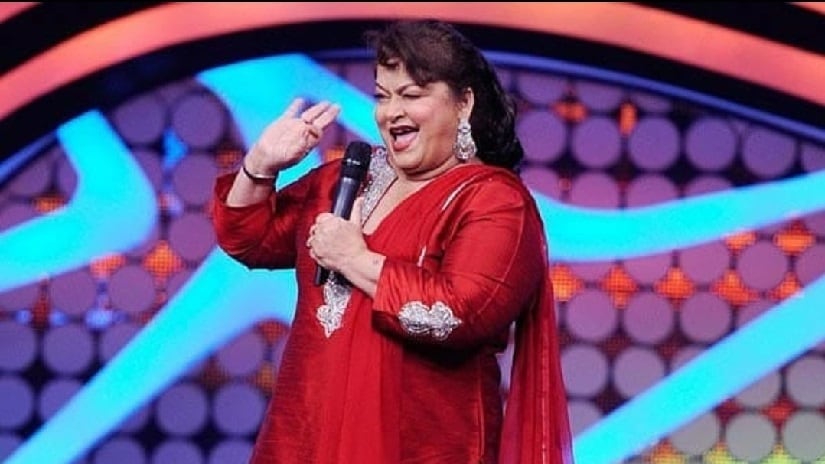“I was in a man’s job, trying to get a foothold. And I didn’t give up,’ Saroj Khan had said in her 2019 TEDx Talk.
In the late 1980s and 1990s, it was said of the Hindi film industry that an actress’s career depended on a hit song. Until they got one, newcomers struggled to get a foothold, no matter their acting talents. Many careers were thus catalysed by Saroj Khan’s moves — the actor or actress who delivered them on screen won the audience’s love and acceptance from the film fraternity.
Madhuri Dixit is the best-known case, an actress rescued partly by a single hit number. Her career was on the edge, having debuted in a film that sank without a trace. One of Hindi cinema’s most effervescent actresses was handed a lifeline by the song Ek Do Teen from Tezaab. It was choreographed by Khan, and performed with elan by Dixit. After that there was no looking back for either of them.
Without any formal training in classical dance, but passionate, graceful, and quick to learn, Khan started young. From playing boys in the backing line up of chorus dancers, she moved to the front row, and finally became the master’s assistant at age 12. A model apprentice to dance master, she taught steps to Helen, Vyjayanthimala, and others, finally bagging her first break as an independent choreographer with Geeta Mera Naam (1974). She was 26.
She did not have pure training but she could adapt traditional, folk elements and Indian expressions to film songs. In later years, her compositions for Sridevi in Mr. India remain unmatched, with ‘Kaante Nahin Kat Te’ remaining an iconic and sensuous rain song.
Then came ‘Ek Do Teen.’ The song was such a rage that it lead to Filmfare instituting a Best Choreography award, making Khan the first recipient in 1989. Not only that, Khan proceeded to raise her price. Where others were getting between Rs 15,000 to Rs 25,000 per song, she insisted on a pay-cheque of Rs 1 lakh for a song. This helped others negotiate better fees too.
According to gossip magazines of the 1980s, Khan was so much in demand that Dixit would not do a film if she were not already on board. This may have been just hearsay, but the consistency of their collaboration reveals that the truth may not have been too far off.
“Of the many actors I have choreographed, she is the only one with whom I could experiment. I have given her so many weird dance steps, but she did them with ease, and without complaints,” Khan said of Dixit in an interview to Rediff.com in 2010.
Once she started delivering one hit item number after another, Khan’s name rose in prominence and up the ranks of the opening credits.
It was a change from the early days when Khan was trying to make it. At that time industry rules only permitted men to be ‘dance masters.’ In her TEDx Talk in 2019, Khan shared, “I was in a man’s job, trying to get a foothold. And I didn’t give up.” She forged the way for women choreographers, breaking the glass ceiling time and again.
Another first was when she delivered a presentation on her work at the traditional Krishna Gnana Sabha’s Natya Kala Conference in Chennai in 2009, once again challenging purists in that audience, and earning their admiration and respect.
Transposing classical dance traditions and blending them with her design brought her to Sringaram – Dance Of Love. Based on Bharatanatyam, Sharada Ramanathan’s Tamil film earned Khan the second of her three National Awards (for Best Choreography) in 2005.
The pure classical piece in Sringaram was also sated with seduction and sensuality. In Nidhi Tuli’s 2012 documentary The Saroj Khan Story, director Ramanathan recounts how the crew marvelled when Khan gave 16 different emotions to convey one line of the song.
In another interview in 2016, reflecting on her dominant years, Khan said, “I loved my time because we got opportunities to express ourselves, no restrictions. We moved our hips but with classical ease that was natural. The background in Kathak and Bharatanatyam with a dazzle of Bollywood presents a beautiful spectacle.”
Filmmakers were impressed by Khan’s expressive face. The ace choreographer believed dance needed to be seen on the face. A fine example of this is ‘Maar Dala’ from Devdas, where Dixit gives a different expression each time the words “maar dala” are sung.
Khan also introduced sensuality, but not without reason. When the censor board questioned the ‘Dhak Dhak’ song from Beta, saying there was too much heaving, Khan had a response ready. “Dhak dhak” refers to the heartbeat and the heart is near the bust line, so the bust has to move, she countered.
Whether it was a classical number, like ‘Dola Re’ from Devdas, a sensuous turn like ‘Kaante Nahin Katte’ from Mr. India or ‘Humko Aajkal Hai Intezar’ from Sailaab, Khan had a move, a nuance, an interpretation for every lyric and every situation. And she did it her way.
Find latest and upcoming tech gadgets online on Tech2 Gadgets. Get technology news, gadgets reviews & ratings. Popular gadgets including laptop, tablet and mobile specifications, features, prices, comparison.

